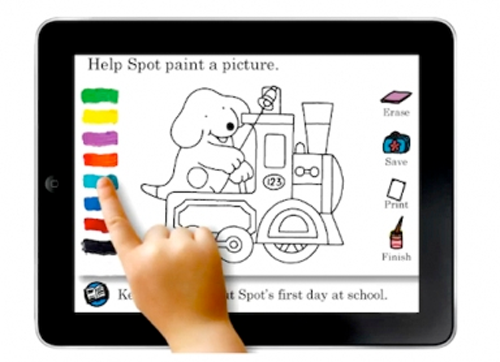Through the eyes of an eighth-grader.
 new media, social networking, education, and gadgets collide.
new media, social networking, education, and gadgets collide.

the article…
It’s too late when they arrive as freshmen in college. They bounce onto campus with brand new hairstyles, the latest clothes and expectations for a college experience already in place. Innovations that colleges were so proud of just a few years ago are passe to a new crop of students influenced by a society constantly in motion.
As a new college president and someone who thinks a lot about higher education, I’ve realized eighth-graders hold the keys to the future. They represent the next wave of students, and colleges have just five years to get ready. Fortunately, I am in the catbird seat — an eighth-grader lives under the same roof with me in this planning laboratory, where simulations always are available.
Our older daughter, Emma, is now a sophomore in college, but when she was in eighth grade I stopped reading all the experts and just began watching her interact with the world. One day, sitting in the family room of our house, I heard Emma bounding down the stairs from her bedroom.
“Where are you headed?” I asked as she opened the front door.
“I need to see Angela for a minute,” she replied. Angela was her friend across the street. Less than a minute later she appeared again and began running up the stairs.
“What was that all about?” I asked.
“I had to tell Angela to go online so we can instant message,” she responded.
That was my first clue that the coming generation of students would encounter higher education with a very different set of expectations, far from the reality of our current enterprise. The world was changing — faster than I imagined. This was the precursor to social networking, which now defines much of the human interaction among a generation of students who always are connected. Team learning reshapes the way we think about education. Expertise is more defined by peers, and less by authoritative sources.
According to data presented at a 2010 conference by Pew Research Center analysts, traditional print media lag way behind in conveying the information millennials now seek out. Only 24 percent cite newspapers as a main news source behind television (65 percent) and the Internet (59 percent). Just think what the shift could be five years down the road. What we do know is we’re far more successful getting information to college students today using Facebook than any other approach.
Our youngest daughter, Greta, is now entering eighth grade. She and her friends are essential to my next phase of data gathering. Some may assume, as I begin this research, I simply will find more of the same, but I already see signs of change. Recently, a series of thunderstorms moved through Pella, Iowa, and a deafening clap of thunder startled my wife, Tammy, and me from sleep at 3 a.m. As we sat in bed recovering from the disruption, Tammy’s cell phone alerted her to a new text message. It was Greta, age 13.
Greta: Did u hear that?!?!?! Is it a bad storm?
Tammy: It’s OK
Greta: okayyy sry did I wake u?
Tammy: No
Greta: love u goodnight
Tammy: love you too
I remember the days when a storm brought children running down the hall to jump in bed with their parents. Now it seems a text message will do.
And, this makes me wonder, will “U” someday replace “You” in the dictionary? Will punctuation become optional? Will text messaging abbreviations give rise to a new dialect of English? While I may not be ready for this, it is today’s reality. Six years ago in eighth grade, Emma’s e-mail address mattered to her and still does. Today in eighth grade, Greta just can’t be bothered. E-mail is much too slow. For her, a computer is a typewriter, sometimes useful for browsing YouTube videos. Her phone is the only device that really matters to her.
In fact, according to an April 2010 report on teens and mobile phones in the Pew Research Center’s Internet and American Life Project, 54 percent of teens ages 12 to 17 text friends on a daily basis, compared to just 11 percent who use e-mail. On that list of preferred daily communication options, e-mail was seventh behind instant messaging at sixth, a social networking site, a landline phone call, face-to-face interaction, a cell phone call, and the widely popular text message.
So what can we conclude at the moment? First, I think collaboration will overtake isolation in learning. Peer-to-peer interactions, interdependencies and combined effort are likely to redefine how we organize information, facilitate learning and assess progress. The emerging generation of students is looking for the input and validation of others to affirm and extend their own learning.
Second, repositories of information need to take on a different form. Handbooks, manuals and catalogs are being replaced by FAQs (frequently asked questions), visual media and peer advice. I was taught asking for help was a sign of weakness. Now the help button, a quick Google search and YouTube video are the preferred pathways. The use of digital assistants will press us to reorganize traditional textbooks, libraries and learning environments.
Third, customization is a growing expectation. Is anyone else completely annoyed when your kids use your computer and change all the settings to suit their needs and interests? I’m happy with my plain desktop background, but wild designs appear when my laptop falls into the wrong hands. It’s a sign of things to come. Learning environments will need more flexibility to adapt to different learning styles.
We have a long way to go to be ready. The eighth-graders will seek to overthrow our colleges and universities. In the end we know what Star Trek fans learned years ago. “Resistance is futile. You will be assimilated.”
Get ready.
###
my most recent experience teaching design the past seven years, it’s true, college students don’t email but they have to for a grade in my classes. that may change when things change in the today’s business office. students return the favor–i must text message. for some, print may well become detritus.
sources:
this article by mark putnam, president of central college in pella, iowa.
negative aspects of text messaging
glass slate




